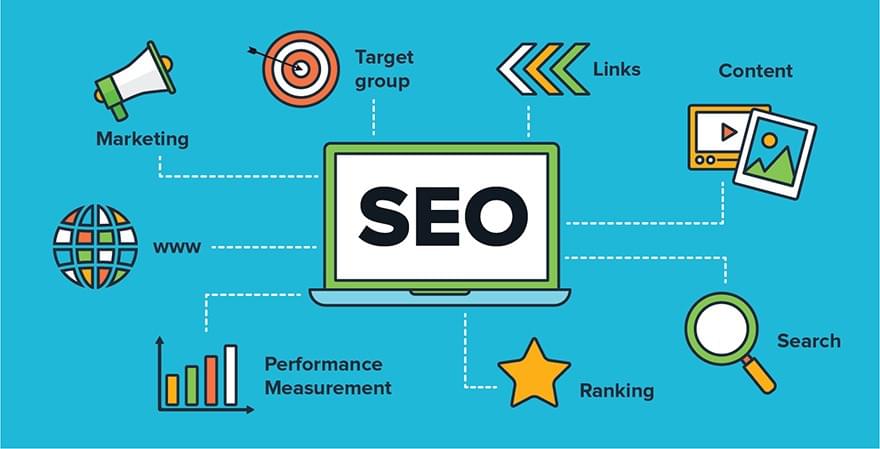Search Engine Optimization (SEO) is the practice of optimizing websites to improve their visibility on search engines like Google, Bing, and Yahoo. The ultimate goal of SEO is to drive organic (non-paid) traffic to your website by ranking higher on search engine results pages (SERPs). In today’s competitive digital landscape, mastering SEO is essential for any business or website looking to reach more users and grow online.
This guide will break down the basics of SEO, how it works, and the best practices to improve your website’s ranking.
How Search Engines Work
Search engines like Google use complex algorithms to determine the relevance and quality of websites. When a user searches for a query, search engines crawl through their index of web pages to provide the most relevant results.
Here’s a basic breakdown of how search engines work:
- Crawling: Search engines use bots, also known as crawlers or spiders, to scan websites. These bots follow links and collect data about the content on each page.
- Indexing: Once the search engine crawls a website, it stores the information in a massive database called an index. This index is then used to retrieve relevant results when a user makes a search query.
- Ranking: When a user types in a search query, the search engine looks through its index and ranks the most relevant and high-quality results. The ranking is influenced by various factors, including keywords, page quality, user experience, and backlinks.
Why is SEO Important?
SEO is crucial for driving organic traffic, which is often the most valuable form of web traffic because it is unpaid and targeted. Here’s why SEO matters:
- Increased Visibility: Appearing on the first page of search results means more people will see your website. Most users don’t look beyond the first page, so ranking higher is key.
- Better User Experience: A well-optimized website offers a better experience for visitors, with fast loading times, mobile responsiveness, and easy navigation.
- Builds Credibility and Trust: Users tend to trust websites that appear at the top of search results. By optimizing your site for SEO, you establish authority in your industry.
- Long-Term Results: Unlike paid ads, which stop driving traffic when the budget runs out, SEO provides long-term benefits and continues to drive traffic even after the initial optimization work is done.
Key Elements of SEO
There are many components to SEO, but they can generally be divided into three categories: On-Page SEO, Off-Page SEO, and Technical SEO.
1. On-Page SEO
On-page SEO refers to the optimizations you make on your website to improve its ranking. This includes optimizing content, HTML elements, and the overall user experience.
Key factors in on-page SEO include:
- Keyword Optimization: Use relevant keywords in your content, title tags, meta descriptions, and headers to help search engines understand the focus of your page.
- High-Quality Content: Create informative, engaging, and original content that satisfies the user’s intent. Search engines prioritize content that provides value to users.
- Internal Linking: Link to other relevant pages within your site to help users navigate and increase the chances of being indexed by search engines.
- Title Tags and Meta Descriptions: Ensure your title tags and meta descriptions are optimized with keywords and provide a clear idea of what the page is about. These are critical for improving click-through rates (CTR).
- Image Optimization: Use descriptive file names and alt text for images to help search engines understand the content of your images.
2. Off-Page SEO
Off-page SEO refers to activities that happen outside your website but still influence its ranking. These activities focus on building your website’s authority and reputation.
Key elements of off-page SEO include:
- Backlinks: Getting high-quality backlinks (links from other websites to yours) is one of the most important factors in off-page SEO. The more reputable and relevant websites that link to your site, the more authority it gains in the eyes of search engines.
- Social Signals: Although social media does not directly impact SEO, a strong social presence can drive traffic to your site and increase visibility.
- Guest Posting: Writing articles for reputable websites in your niche is a great way to earn backlinks and boost your authority.
3. Technical SEO
Technical SEO focuses on the backend of your website to ensure it can be crawled and indexed by search engines. It also improves the overall user experience.
Key aspects of technical SEO include:
- Website Speed: Fast-loading websites rank higher because they offer a better user experience. Slow websites may lead to higher bounce rates.
- Mobile-Friendliness: With the majority of searches now happening on mobile devices, Google uses mobile-first indexing. This means your site must be fully responsive on mobile devices to rank well.
- SSL Certificates: HTTPS is a ranking factor, so having an SSL certificate installed ensures that your website is secure and trustworthy.
- Structured Data: Implementing structured data (or schema markup) helps search engines understand your content better and can result in rich snippets in the search results.
SEO Best Practices
To maximize your SEO efforts, here are some best practices you should follow:
1. Perform Keyword Research
Keyword research is the foundation of any SEO strategy. Use tools like Google Keyword Planner, Ahrefs, or SEMrush to find relevant keywords that have a good balance of search volume and competition. Focus on long-tail keywords that are more specific to your niche, as these are easier to rank for and often attract more qualified traffic.
2. Create High-Quality Content
Content is king when it comes to SEO. Google prioritizes websites that offer valuable, well-researched, and engaging content that satisfies the user’s intent. Aim to create content that answers common questions in your industry, offers solutions, and provides useful information.
3. Optimize for Featured Snippets
Featured snippets are short summaries of answers that appear at the top of Google’s search results. Optimizing your content for snippets can significantly increase visibility and traffic. To do this, answer common questions directly and concisely in your content.
4. Build Quality Backlinks
Building a strong backlink profile is one of the most effective ways to boost your website’s authority and rankings. Focus on earning backlinks from high-authority websites in your industry through guest posting, partnerships, and creating link-worthy content like infographics or original research.
5. Optimize for Mobile
With mobile-first indexing, it’s essential that your website is mobile-friendly. Make sure your site is responsive, has fast loading times on mobile devices, and offers a seamless user experience across all devices.
6. Improve Page Speed
Page speed is a critical ranking factor. If your website takes too long to load, users will leave, leading to a high bounce rate. Use tools like Google PageSpeed Insights or GTmetrix to analyze your site’s speed and optimize it by compressing images, using a content delivery network (CDN), and minimizing code.
7. Use Internal Links
Internal linking helps distribute link equity across your website and makes it easier for users to navigate between pages. It also helps search engines crawl and index your site more efficiently. Make sure to use descriptive anchor text for internal links to enhance their SEO value.
Measuring SEO Success
SEO is an ongoing process, and measuring your progress is essential for success. Here are a few metrics to track:
- Organic Traffic: Use tools like Google Analytics to monitor how much traffic comes from organic search and which keywords are driving that traffic.
- Keyword Rankings: Track your rankings for target keywords over time using tools like SEMrush or Ahrefs. Pay attention to any significant fluctuations and adjust your strategy accordingly.
- Backlinks: Use tools like Ahrefs or Moz to monitor your backlink profile. Keep an eye on new backlinks, lost links, and the quality of referring domains.
- Conversion Rate: Ultimately, SEO should drive business results, not just traffic. Monitor how many organic visitors are converting into leads, subscribers, or customers.
Conclusion: The Long-Term Value of SEO
SEO is a long-term investment that can yield significant rewards when done correctly. By focusing on high-quality content, optimizing for relevant keywords, building backlinks, and ensuring your website performs well technically, you can increase your visibility on search engines and attract more traffic.
Remember, SEO is constantly evolving as search engines update their algorithms, so staying informed about the latest trends and best practices is key to maintaining your rankings and growing your online presence.
Need help improving your website’s SEO? At 10Bit.Digital, we specialize in creating customized SEO strategies that drive results. Contact us today to get started!



